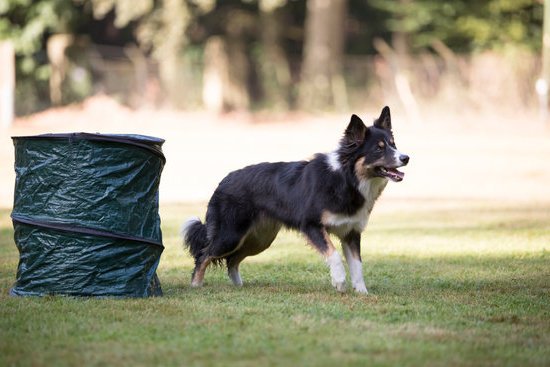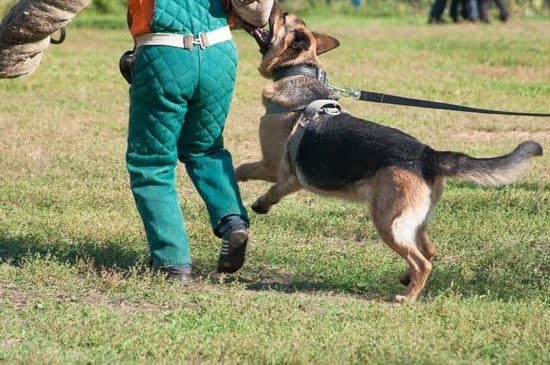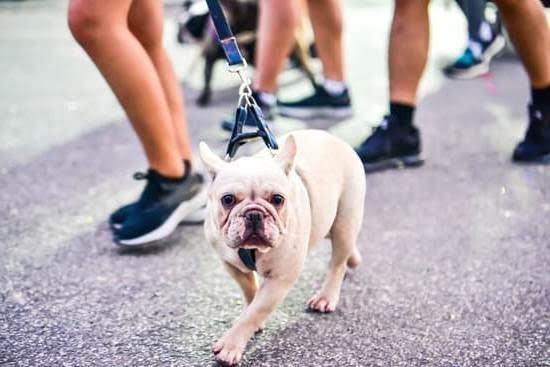Service dogs play a crucial role in society by providing assistance and support to individuals with disabilities. Whether it’s guiding individuals with visual impairments, alerting those with hearing loss, or helping individuals with mobility challenges, service dogs are trained to perform specific tasks that enhance the quality of life for their handlers.
If you are interested in getting your dog trained to become a service dog, there are several important factors to consider. From choosing the right breed and evaluating your dog’s personality to finding a professional trainer and navigating legal regulations, this article will guide you through the necessary steps to successfully train your dog for service work.
Understanding the importance of service dogs in society is essential before embarking on the journey of training your own. These remarkable animals serve as an extension of their handlers, allowing them to live more independently and overcome daily obstacles that may otherwise limit their abilities.
The tasks performed by service dogs are diverse and wide-ranging, tailored specifically to meet the needs of their handlers. From alerting individuals with epilepsy of impending seizures to retrieving items for those with limited mobility, service dogs offer invaluable assistance and support in various ways.
One key aspect of training a service dog is finding the right breed suited for this specialized work. Not every dog is suitable for becoming a service dog due to variations in temperament, size, and physical characteristics.
Different breeds have different strengths and tendencies that make them more suitable candidates for particular types of service work. It’s important to carefully consider these factors when selecting a dog as it can greatly impact their ability and aptitude for being effectively trained as a service dog.
In the upcoming sections of this article, we will explore various aspects involved in training your dog for service work. From assessing your dog’s personality traits and finding a professional trainer who specializes in service dog training to laying a foundation through basic obedience training and teaching task-specific skills, each step plays a vital role in cultivating the abilities and behaviors required for a successful service dog.
Additionally, we will discuss the important role of socialization and public access training, building a strong bond with your service dog as a handler, and the significance of regular practice and reinforcement to maintain their skills. Lastly, we will address certification and legal considerations to ensure compliance with regulations governing service dogs.
Training a dog to become a service animal is an incredibly rewarding experience, not only for their handlers but also for society as a whole. These highly trained dogs bring independence, safety, and companionship to individuals in need while simultaneously raising awareness about the capabilities and accomplishments of people with disabilities.
By following the guidance presented in this article, you will gain valuable insights into successfully training your dog for service work and ultimately embark on a journey that can transform lives.
What is a Service Dog
A service dog is a specially trained and highly skilled canine that assists individuals with disabilities in carrying out daily tasks and activities. These dogs are not just pets; they have a crucial role to play in improving the quality of life for their handlers. Understanding the role and responsibilities of a service dog is essential for anyone considering getting their dog trained for this purpose.
The Role of a Service Dog
Service dogs are trained to perform specific tasks that cater to the needs of their handlers. The tasks they perform greatly depend on the type of disability their handler has. For example, a service dog may be trained to assist individuals with mobility impairments by picking up dropped items, opening doors, or even providing physical stability while walking. Other service dogs may be trained to detect medical conditions such as seizures or low blood sugar levels.
Responsibilities of a Service Dog
Just like any other job, being a service dog comes with certain responsibilities. One of the primary responsibilities they have is to remain focused on their handler at all times, ignoring distractions from people, other animals, or environmental stimuli. They must also be well-behaved when out in public places, obeying commands without hesitation. Additionally, service dogs are responsible for maintaining their physical health and mental well-being through routine exercise, proper nutrition, and regular veterinarian check-ups.
It’s important to note that while service dogs provide invaluable assistance, they are not required to provide emotional support or comfort solely by their presence. Emotional support animals serve this purpose instead. Therefore, it is important for individuals considering getting their dog trained as a service dog to understand the specific role and responsibilities associated with this type of assistance animal.
Identifying the Right Breed
When it comes to training a dog for service work, one of the first and most crucial steps is identifying the right breed. Not all dogs are suitable for service training, as certain breeds possess specific characteristics and traits that make them better suited for this type of work. In this section, we will explore the process of choosing a suitable dog for service training and how to find the right breed.
- Research different breeds: Start by researching different breeds known for their suitability as service dogs. Some commonly recommended breeds include Labrador Retrievers, Golden Retrievers, German Shepherds, and Standard Poodles. These breeds are often chosen for their intelligence, trainability, and calm temperament.
- Consider your needs: Think about the specific tasks and responsibilities you need your service dog to fulfill. For example, if you require a dog with strong retrieval skills or the ability to assist with mobility tasks, you may want to consider breeds that excel in these areas.
- Assess energy levels: Service dogs need to have an appropriate energy level for their intended tasks. Some individuals may require high-energy dogs capable of providing physical assistance, while others may need more laid-back companions who excel at emotional support work.
- Evaluate size: Size can play a significant role depending on the tasks your service dog will be performing and your living situation. Larger dogs may be more suited for tasks such as mobility assistance, while smaller dogs may be more suitable if space is limited or if there are concerns about handling a larger animal.
- Seek professional advice: If you’re unsure about what breed would be best suited for your specific needs and circumstances, consult with professionals who specialize in service dog training or organizations that provide these animals. They can offer valuable insights based on their experience working with different types of breeds.
Choosing the right breed is a crucial step in ensuring the success of training a service dog. By considering factors such as breed characteristics, energy levels, and specific needs, you can increase the likelihood of finding a dog well-suited for service work. Remember to seek professional advice when necessary and take the time to thoroughly research and evaluate different breeds before making a decision.
Evaluating your Dog’s Personality
Understanding the Importance of Personality Assessment
Before embarking on the journey of training your dog to become a service dog, it is crucial to evaluate their personality and aptitude for this specific line of work. Not all dogs are suitable for service training, as this type of work requires specific traits and characteristics. Assessing your dog’s personality will help determine if they have the potential to excel in service work and fulfill the necessary responsibilities.
Assessing Temperament and Behavior
One key aspect of evaluating your dog’s personality is assessing their temperament and behavior. Service dogs need to possess a calm, friendly, and stable temperament, as they will be exposed to various environments and interact with different people on a daily basis. It is essential to observe how your dog responds to different situations, noises, and distractions. A high level of adaptability, confidence, and tolerance is desirable in a service dog candidate.
Furthermore, evaluating your dog’s behavior is equally important. They should have good impulse control, be responsive to commands, and exhibit appropriate social behaviors. Aggression or fearfulness can disqualify a dog from being suitable for service work. Additionally, observing their energy levels can help determine if they have the stamina required for long hours of working alongside their handler.
Health and Physical Evaluation
In addition to evaluating temperament and behavior, it is also crucial to assess your dog’s health and physical condition. Service dogs need to be in overall good health with no significant medical issues that could hinder them from performing their duties effectively. Regular veterinary check-ups are necessary to ensure the well-being of your potential service dog.
Moreover, certain breeds are more prone to certain health conditions compared to others. It is essential to research the breed you are considering for service training thoroughly to understand any potential health risks associated with them. Considering factors such as size, weight limits for mobility tasks, and any physical limitations is essential in evaluating your dog’s suitability for service work.
By carefully assessing your dog’s personality, temperament, behavior, health, and physical condition, you can make an informed decision about their potential as a service dog. Remember that not all dogs are suitable for this role, and it is essential to prioritize the well-being and happiness of your canine companion throughout the evaluation process.
Finding a Professional Trainer
Finding a professional trainer is a crucial step in successfully training your service dog. A professional trainer not only has the knowledge and expertise to properly train your dog, but they also understand the unique needs and challenges of service dogs. Here are some steps to help you find the right trainer for your service dog:
- Research: Start by conducting research to find reputable trainers in your area. Look for trainers who specialize in service dog training or have experience working with service dogs. Read reviews and testimonials from previous clients to get an idea of their track record.
- Credentials and Certifications: Look for trainers who have relevant certifications or credentials, such as certification from the Certification Council for Professional Dog Trainers (CCPDT). These certifications ensure that the trainer has met certain standards and has demonstrated proficiency in training dogs.
- Interview Potential Trainers: Once you have compiled a list of potential trainers, contact them to set up an initial consultation or interview. During this meeting, ask them about their experience and methodology in training service dogs. Inquire about their success rate with previous clients and ask for references.
- Observe Training Sessions: Before making a final decision, ask if you can observe a training session conducted by the trainer. This will give you an opportunity to see how they interact with the dogs, their teaching methods, and their overall approach to training.
- Compatibility: It is important that both you and your dog feel comfortable working with the trainer. Make sure that the trainer understands your specific needs and requirements for your service dog. Trust your instincts when assessing whether you believe the trainer will be a good fit for you and your dog.
Remember, finding a professional trainer is essential to ensure successful service dog training. They will provide guidance on topics like basic obedience training, specialized skills training, socialization, public access, reinforcing commands, etc., helping your dog become well-prepared for its role as a service dog.
Basic Obedience Training
Basic obedience training is an essential step in laying the foundation for service work in dogs. Obedience training provides the necessary building blocks for a service dog to acquire the skills and behaviors needed to assist individuals with disabilities. This training helps them become well-behaved, responsive, and reliable companions.
During basic obedience training, dogs learn fundamental commands such as sit, stay, down, come, and heel. These commands form the basis of communication between the dog and handler, enabling them to work effectively together. The dog must demonstrate consistent and reliable responses to these commands before moving on to more advanced service tasks.
The training process starts with positive reinforcement techniques that reward desired behaviors and discourage unwanted ones. This involves using treats, praise, and other rewards to reinforce good behavior while ignoring or redirecting undesirable behavior. It is important to be patient and consistent during this phase of training as it may take time for the dog to fully understand what is expected of them.
In addition to teaching basic commands, obedience training also focuses on leash manners and impulse control. Dogs must learn how to walk calmly on a leash without pulling or lunging towards distractions. They should remain focused on their handler even in challenging environments. Furthermore, impulse control exercises help dogs develop self-control by teaching them to resist temptations such as food or toys until given permission.
By providing a solid foundation in basic obedience training, service dogs can develop the necessary skills and behaviors required for their specific tasks. This stage sets the stage for further specialized training where dogs will learn task-specific skills that directly assist individuals with disabilities in their daily lives. With patience, consistency, and positive reinforcement – both handlers and their service dogs can progress towards a successful partnership built on trust and mutual understanding.
Specialized Training for Service Dogs
Specialized training is a crucial aspect of transforming a dog into an effective service dog. This training equips the dog with the necessary skills to perform specific tasks that will aid their handler in their day-to-day life. With the right techniques and consistency, dogs can learn a wide range of tasks tailored to their handler’s needs.
Identifying Task Requirements
The first step in specialized training is identifying the specific tasks that the service dog will need to learn. These tasks depend on the needs and disabilities of their handler.
Some common examples include retrieving items, opening doors, turning light switches on and off, alerting to sounds or medical conditions, pulling wheelchairs, and providing stability during times of imbalance. It is essential to consult with a professional trainer or organization to determine which tasks are suitable for your dog’s capabilities and your needs.
Positive Reinforcement Techniques
Positive reinforcement techniques are highly effective when it comes to specialized training. Use treats, praise, and other rewards to motivate your dog and reinforce desired behaviors consistently. Rewarding the dog immediately after they perform the desired task will help them understand the connection between their actions and positive outcomes. It is important to be patient with your dog during this phase of training as they may require time to grasp complex tasks fully.
Gradual Training Progression
In order for your service dog to master specialized tasks, it’s crucial to break down each skill into small steps and progress gradually. Start by introducing simpler versions of the task and gradually increase difficulty over time as your dog becomes more comfortable and proficient with each stage. Consistency is key during this process – practice regularly but always end each session on a positive note.
Remember that not all dogs are capable of mastering every task due to their breed characteristics or physical limitations. If you find that certain tasks are too challenging for your dog or do not align with their strengths, it may be necessary to reassess and adapt the training plan accordingly. Working closely with a professional trainer ensures that your service dog receives the appropriate guidance and support throughout their specialized training journey.
Socialization and Public Access Training
Socialization and public access training are crucial components of preparing a service dog for real-life situations. This training ensures that the dog is comfortable and well-behaved when interacting with various people, animals, and environments. It also teaches the dog how to behave appropriately in public places such as restaurants, stores, and airports.
One important aspect of socialization and public access training is exposing the service dog to different types of stimuli in a controlled manner. This includes introducing the dog to various sounds (such as sirens or loud crowds), sights (such as bicycles or people wearing hats), smells (such as food or cleaning products), and textures (such as different types of flooring).
Gradually increasing exposure to these stimuli can help desensitize the dog and prevent them from becoming fearful or reactive in new situations.
In addition to environmental stimuli, socialization also involves interacting with different people and animals. The service dog should learn how to remain calm and focused even when there are distractions present. This may involve meeting unfamiliar individuals, including adults, children, and individuals with disabilities. The dog should be taught appropriate manners such as not jumping on people, pulling on the leash, or barking excessively when greeting others.
To achieve successful socialization and public access training, it is important for the handler to be consistent in providing proper guidance and reinforcement. Positive reinforcement techniques such as treats, praise, toys, or clicker training can be used to reward desired behaviors during these training sessions. It is essential to remember that every interaction during this phase is an opportunity for the service dog to learn and grow.
- Expose your dog gradually to different sounds, sights, smells, and textures.
- Introduce your service dog to various types of people including adults, children, and individuals with disabilities.
- Use positive reinforcement techniques such as treats or praise during socialization training.
Ultimately, socialization and public access training plays a vital role in preparing your service dog for its duties. By ensuring that your dog is comfortable and well-behaved in different environments, you can have confidence in their ability to navigate real-life situations with ease. Additionally, a properly socialized service dog is more likely to be accepted and welcomed by the community, thereby maximizing the benefits and independence it can provide to its handler.
Finally, it is important to remember that every service dog is unique, and the training process may vary depending on individual needs. Consulting with a professional trainer who specializes in service dogs can provide valuable guidance throughout this process. With patience, consistency, and proper training techniques, you can help your dog develop into a well-rounded service dog that will make a positive impact in both your life and the lives of others.
- Ensure that your service dog is comfortable and well-behaved in different environments.
- Consult with a professional trainer who specializes in service dogs for guidance.
- With patience and consistency, help your dog develop into a well-rounded service dog.
The Role of the Handler
The bond between a service dog and their handler is of utmost importance in the success of their partnership. The role of the handler goes beyond being a caretaker or trainer; it involves building a strong emotional connection with the service dog. This section will explore the key aspects involved in enhancing this bond.
One crucial element in building a strong bond with your service dog is spending quality time together. Engaging in activities that both you and your dog enjoy can help foster mutual trust and understanding. Regular exercise, playtime, and grooming sessions can contribute to the bonding process. These activities also provide an opportunity to reinforce training and obedience commands.
Consistency is another critical factor in developing a strong bond with your service dog. Establishing consistent routines, commands, and expectations helps your dog understand what is expected of them, leading to a sense of security and reliability in their handler. Consistency also includes using consistent hand signals, tone of voice, and body language when giving commands or cues to your service dog.
Effective communication is vital for any successful relationship, including the one between a service dog handler and their dog. It’s essential to communicate clearly and positively with your dog through verbal cues, hand signals, and body language. Praise and rewards should be used to reinforce desired behaviors while avoiding punishment or harsh corrections.
Building a strong bond with your service dog takes time, patience, and dedication. It requires constant effort from both the handler and the canine companion. By investing in this relationship, you create a solid foundation for successfully working together as an effective team.
| Aspect | Description |
|---|---|
| Spend Quality Time | Engage in regular activities such as exercise, playtime, and grooming sessions. |
| Be Consistent | Establish consistent routines, commands, and expectations to provide a sense of security for your dog. |
| Effective Communication | Communicate clearly and positively through verbal cues, hand signals, and body language. |
The Importance of Regular Practice and Reinforcement
Regular practice and reinforcement are essential for maintaining the skills and abilities of a trained service dog. Just like any other form of training, consistency is key to ensuring that your service dog continues to perform their tasks effectively. By incorporating regular practice sessions into your daily routine, you can reinforce their training and keep them sharp.
One important aspect of regular practice is to consistently review the tasks and commands that your service dog has been trained to perform. This helps to ensure that they remember and can confidently execute these tasks when needed. Whether it’s retrieving an item, opening a door, or alerting you to certain sounds or smells, practicing these tasks on a regular basis will help solidify their training.
In addition to reviewing specific tasks, it’s also important to continue reinforcing basic obedience behaviors such as sitting, staying, and walking calmly on a leash. These foundational skills provide the groundwork for more advanced service work and should be practiced regularly.
Another crucial element of maintaining skills and abilities is providing mental stimulation for your service dog. Engaging their minds with puzzle toys, scent games, or obedience drills not only keeps them mentally sharp but also provides much-needed enrichment.
Regular exercise is also vital for maintaining physical health and stamina. Service dogs need regular opportunities for exercise and play to keep them fit and healthy. This not only supports their overall well-being but also ensures that they have the endurance required for their service duties.
By regularly practicing and reinforcing your service dog’s training, you can ensure that they remain skilled, confident, and reliable in performing their duties. This not only benefits you as the handler but also enhances the safety and effectiveness of the team as a whole.
| Benefits | Methods |
|---|---|
| Maintains skills and abilities | Regular practice sessions |
| Strengthens obedience behaviors | Reviewing basic commands |
| Provides mental stimulation | Puzzle toys, scent games, obedience drills |
| Promotes physical health and stamina | Regular exercise and play |
Certification and Legal Considerations
When it comes to owning a service dog, understanding the certification process and legal considerations is essential. Certification provides validation that your dog has gone through the necessary training and meets the standards required for service work. This section will guide you through the steps of obtaining certification and navigating the legal landscape surrounding service dogs.
The first step in getting your service dog certified is to ensure that your dog meets the criteria set by certifying organizations. These organizations have their own set of requirements, which typically include a minimum age for the dog, proof of specific training skills, and passing an evaluation conducted by a qualified professional. It’s important to thoroughly research different certifying organizations and select one that aligns with your needs and goals.
It’s worth noting that while certification is not legally required in many jurisdictions, it can be beneficial in providing credibility and easing public confusion about your dog’s role. However, legal rights and protections for service dogs are governed by specific laws such as the Americans with Disabilities Act (ADA) in the United States. This legislation ensures that individuals with disabilities have equal access to public places when accompanied by trained service dogs.
| Service Dog Certification Process | Legal Considerations |
|---|---|
| Research certifying organizations to find one that aligns with your needs. | Know and understand relevant laws governing access rights for service dogs. |
| Evaluate your dog’s training level to ensure they meet certification criteria. | Understand your rights as a handler when faced with discrimination or denial of access. |
| Submit any required documentation or assessments to complete the certification process. | Comply with any additional local or state laws regarding service dogs. |
It’s important to be aware of your rights as a handler. While individuals with disabilities are protected by law, they may still encounter discrimination or denial of access from establishments unfamiliar with the regulations surrounding service dogs. In such cases, it’s crucial to understand the appropriate course of action and advocate for your rights.
In addition to certification and legal considerations, ongoing education and knowledge about service dog laws are also important responsibilities for handlers. It is advisable to keep abreast of any changes in legislation and stay informed about any local or state-specific laws that may apply to you and your service dog.
By navigating the certification process and legal considerations surrounding service dogs, you can ensure that your canine companion receives the recognition they deserve while enjoying full access to public places. Obtaining certification not only provides credibility but also plays a crucial role in fostering understanding and acceptance within society.
Conclusion
In conclusion, a trained service dog can bring about life-changing benefits for individuals with disabilities. These remarkable animals play a crucial role in society, providing assistance and support to those in need. From aiding individuals with physical impairments to providing emotional support for those struggling with mental health conditions, service dogs are truly incredible.
To ensure that a dog is suitable for service training, it is important to choose the right breed and evaluate their personality. Professional trainers play a vital role in successful service dog training, teaching basic obedience skills as well as specialized tasks specific to the individual’s needs. Through socialization and public access training, these dogs are prepared for real-life situations and learn to navigate different environments with ease.
The handler’s role cannot be overlooked either – building a strong bond with the service dog is essential for effective communication and teamwork. Regular practice and reinforcement of skills are necessary to maintain the dog’s abilities and enhance their performance. Additionally, navigating the certification process and understanding legal considerations surrounding service dogs is crucial for both handlers and their furry companions.
Overall, the impact of a trained service dog on an individual’s life cannot be overstated. These animals provide not just assistance but also companionship, love, and immense joy. They enable individuals with disabilities to lead more independent lives, contributing to their overall well-being and quality of life. So let us celebrate the amazing work of these trained service dogs and continue to advocate for their acceptance and inclusion in our society.
Frequently Asked Questions
How hard is it to train a dog to be a service dog?
Training a dog to be a service dog can be quite challenging. It requires a significant amount of time, effort, and dedication from both the owner and the dog. Service dogs undergo extensive training to develop the necessary skills and behaviors to assist individuals with disabilities.
The level of difficulty in training can depend on various factors, including the breed and temperament of the dog, as well as the specific needs of the individual they will be assisting. Patience, consistency, and positive reinforcement are key elements in successfully training a service dog.
What are the three questions you can ask about a service dog?
When it comes to service dogs, there are three essential questions one can ask to better understand their role and purpose. First, it is important to inquire about the specific tasks or services that the dog has been trained to perform. This helps establish clarity on what assistance they provide for individuals with disabilities.
Second, one can ask about any certifications or qualifications that the service dog possesses. This helps ensure that the dog has undergone proper training under recognized standards. Lastly, it is crucial to ask about any etiquette or guidelines for interacting with a service dog since they are working animals providing vital assistance.
How to get a service dog for free in Florida?
To obtain a free service dog in Florida, there are several options available. One route is through nonprofit organizations or charities that specialize in providing service dogs for individuals with disabilities at no cost. These organizations often have application processes where individuals can apply for consideration based on their specific needs and circumstances.
It is important to do thorough research on these organizations, seeking out reputable ones that have a solid track record in providing well-trained service dogs at no charge. Additionally, some fundraising events or community initiatives may also offer opportunities to obtain a free service dog in Florida by connecting individuals with sponsorships or donations specifically designated for this purpose.

Welcome to the blog! I am a professional dog trainer and have been working with dogs for many years. In this blog, I will be discussing various topics related to dog training, including tips, tricks, and advice. I hope you find this information helpful and informative. Thanks for reading!





